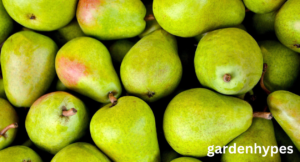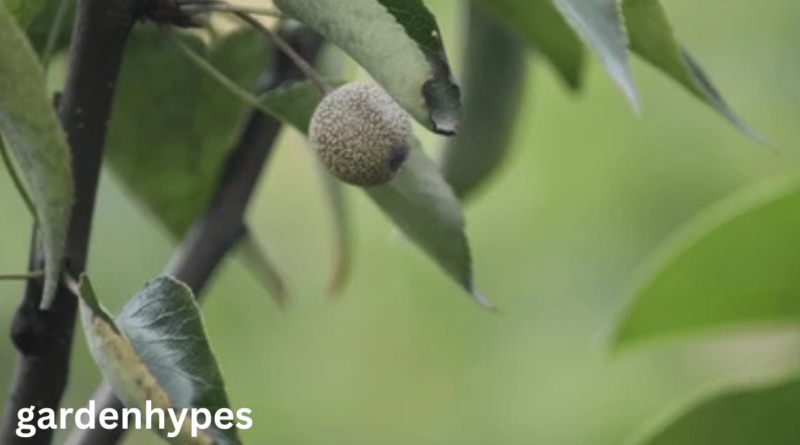Fruit That Looks Like a Pear Nature’s Sweet Lookalikes
Introduction
If you’ve ever walked through a fruit market and spotted something fruit that looks like a pear but isn’t, you’re not alone. Nature has a funny way of repeating its designs — and the pear’s curvy, elegant shape seems to be one of its favorites. From tropical guavas to ancient quinces, several fruits mimic the pear’s shape, creating a delightful mix of familiarity and surprise.
click in link fruits that grow on trees
Pear-shaped fruits have a certain charm. Their soft, tapering base and plump top make them look inviting, even luxurious. But their beauty isn’t just in their looks — many of these fruits share the pear’s refreshing sweetness, grainy texture, or floral fragrance. Some, like the Asian pear, taste almost identical, while others, like the avocado or chayote, are completely different inside.
In the gardening and fruit world, pear-shaped fruits represent abundance and balance. They’re loved for their variety, symbolism, and the way they fit perfectly in the palm of your hand. Whether you’re a fruit enthusiast, gardener, or food lover, exploring these pear-like fruits opens a window into nature’s creativity — showing how one shape can take on so many flavors, textures, and colors.
So, grab your fruit basket and let’s explore the world of fruits that look like pears — from tropical twins to garden favorites.
Understanding Pears – The Original Classic
Before we look at the imitators, let’s talk about the original masterpiece — the pear itself. Belonging to the Pyrus genus, pears are one of the oldest cultivated fruits, believed to have been grown for over 3,000 years in Europe and Asia. Their distinctive bell-like shape — wider at the bottom, tapering at the top — makes them instantly recognizable.
There are over 3,000 varieties of pears worldwide, each with its own taste, texture, and color. Some of the most popular include:
- Bartlett Pears: Sweet, juicy, and perfect for eating fresh.
- Bosc Pears: Brown-skinned and firm, ideal for baking.
- Anjou Pears: Green or red varieties, known for their mild flavor.
- Comice Pears: Soft, buttery, and exceptionally sweet.
A ripe pear has a delicate floral aroma, tender skin, and a juicy, grainy texture that melts in your mouth. Its flavor profile can range from honey-like sweetness to refreshing tartness, depending on the type.
What makes pears fascinating is how they balance elegance and simplicity. They’re easy to grow, store well, and can be eaten raw, baked, or preserved. Their classic shape — narrow at the top, round at the base — has even inspired art, design, and sculpture for centuries.
With this foundation, let’s look at other fruits that borrow the pear’s iconic silhouette.
Top Fruits That Look Like Pears
Nature loves to experiment. Across continents and climates, several fruits have evolved to mirror the pear’s form — some purely by coincidence, others through shared ancestry. Let’s explore the top fruits that resemble pears, inside and out.
1. Guava – The Tropical Twin
Guava is one of the most common fruits mistaken for a small pear — especially when unripe. Its light green skin, round-to-pear shape, and subtle fragrance make it look like a tropical cousin of the pear. Native to Central America but grown worldwide, guava is known for its sweet-tart flavor and soft, seedy center.
Unlike pears, guavas have edible seeds and a more tropical aroma. The taste is a mix of strawberry, pear, and lemon — a perfect balance of sweetness and tang. Gardeners love guava trees because they’re hardy, drought-tolerant, and bear fruit year-round in warm climates.
Guava isn’t just tasty; it’s a nutritional gem — packed with vitamin C, antioxidants, and fiber, making it one of the healthiest pear-shaped fruits around.
2. Quince – The Ancient Cousin
Quince is a fruit that often confuses people because it looks so much like a yellow pear — but you’ll know it’s different the moment you bite into one! Native to the Middle East and Mediterranean, the quince has a golden-yellow skin and a similar shape to a pear, but its flesh is hard and sour when raw.
However, when cooked, quince transforms into something magical — sweet, fragrant, and rosy-colored, often used in jams, jellies, and desserts. Its flavor deepens into something between an apple and a pear, with hints of honey and spice.
In ancient times, quince was considered a symbol of love and fertility — often given at weddings. Its tree also shares similarities with the pear tree, making it a true botanical cousin. In short, quince is the pear’s elegant ancestor, loved for its aroma and culinary charm.

3. Nashi Pear (Asian Pear) – The Round Rival
At first glance, the Nashi pear (also known as Asian pear or apple pear) might look like a cross between an apple and a pear — and that’s exactly how it tastes. Native to East Asia, this fruit is rounder than the traditional European pear but shares the same crisp, juicy texture.
Its flavor is mild, sweet, and refreshing, often eaten fresh or sliced into salads. Unlike soft pears, the Asian pear stays crunchy even when ripe, making it perfect for storage and transport. The tree thrives in sunny climates and is a favorite among orchard growers.
If the regular pear is the elegant dancer of the fruit world, the Nashi pear is the sporty twin — firm, bright, and full of energy.
4. Chayote – The Vegetable That Pretends to Be a Fruit
Now here’s a twist — Chayote, also known as vegetable pear or mirliton, isn’t technically a fruit but a gourd. However, its appearance is strikingly pear-like. With its pale green skin and rounded bottom tapering to a narrow top, it could easily pass for a giant pear at first glance.
Chayote has a mild, cucumber-like taste and is used in soups, salads, and stir-fries. It’s rich in fiber, potassium, and vitamin C, making it both delicious and nutritious. In many countries, it’s grown as a staple crop due to its productivity and versatility.
Even though it’s a vegetable, chayote earns a rightful spot on our list — it’s the pear’s lookalike from the veggie world, proving that nature blurs boundaries beautifully.
5. Avocado – The Creamy Imitator
Yes, the beloved avocado also wears the pear’s shape proudly! Sometimes called an “alligator pear,” this creamy fruit has a dark green, bumpy skin and a pear-like silhouette. But that’s where the similarity ends — inside, you’ll find buttery flesh and a single large seed.
click in link fruits that grow on trees
Native to Central America, avocados are nutritional powerhouses loaded with healthy fats, fiber, and vitamins. They thrive in warm climates and make a stunning addition to any garden. Despite its savory use in dishes like guacamole, the avocado is botanically a fruit — and one of the most unique pear-shaped ones at that.
faqs
1. Which fruit looks most like a pear?
The quince is the fruit that looks most like a pear. It shares a very similar shape and even grows on trees that resemble pear trees. The main difference is its taste and texture — quince is hard and tart when raw but becomes deliciously sweet and fragrant when cooked. Its golden-yellow color also makes it appear like a ripe pear at first glance.
2. Can I eat quince raw like a pear?
Technically, you can eat quince raw, but most people don’t. Raw quince is hard, sour, and astringent, which makes it unpleasant to eat. However, when cooked, quince turns soft and develops a rich, honey-like flavor. It’s perfect for making jams, jellies, or poaching in syrup. So, while it looks like a pear, it’s better enjoyed cooked.
3. What’s the sweetest fruit shaped like a pear?
The Asian pear (Nashi pear) is the sweetest among pear-shaped fruits. It has a refreshing crunch, juicy texture, and a naturally high sugar content that makes it taste like a blend between an apple and a traditional pear. You can eat it fresh, slice it into salads, or use it in desserts for a sweet, crisp bite.
4. Are there vegetables that look like pears?
Yes! The chayote, also known as the vegetable pear, is a popular example. Although it’s technically a vegetable, it’s shaped exactly like a pear and even shares a similar green color. Chayote has a mild, cucumber-like taste and is often used in soups, stews, and stir-fries. It’s nutritious, versatile, and commonly grown in tropical and subtropical regions.
5. Which pear-shaped fruit is best for home gardening?
If you want to grow a pear-shaped fruit in your garden, guava or Asian pear are excellent choices. Guava trees are easy to care for, drought-resistant, and bear fruit almost year-round in warm climates. Asian pears, on the other hand, thrive in sunny areas and produce crisp, juicy fruits that store well. Both add beauty and productivity to your home garden.
